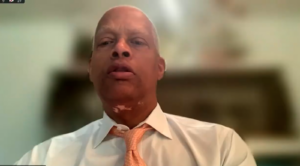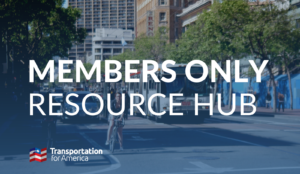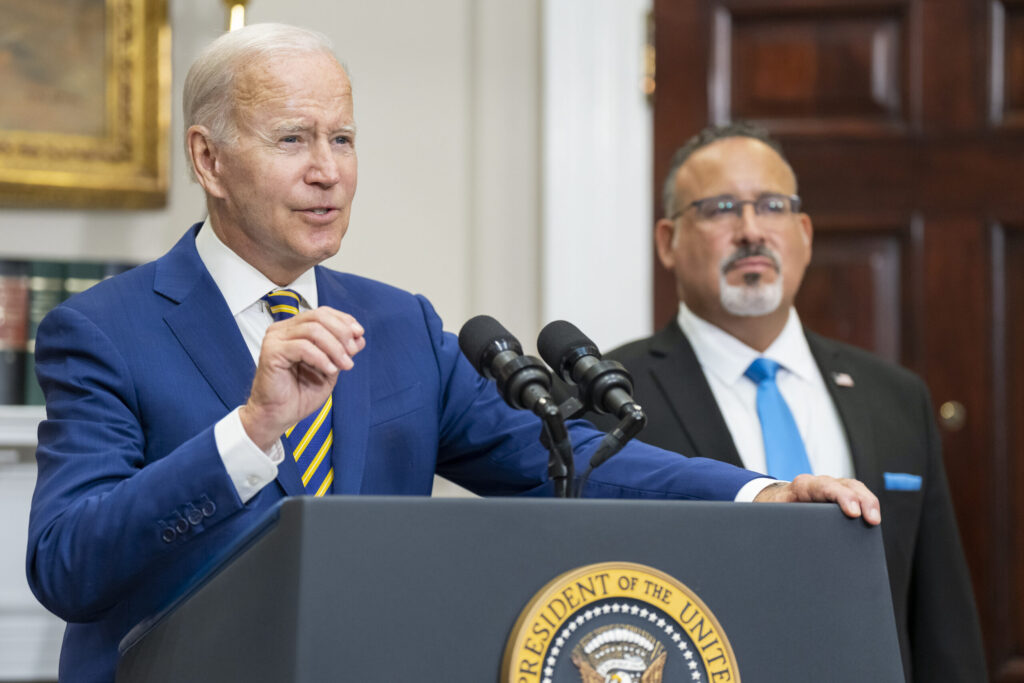
Vision Zero won’t happen without Safe Streets for All
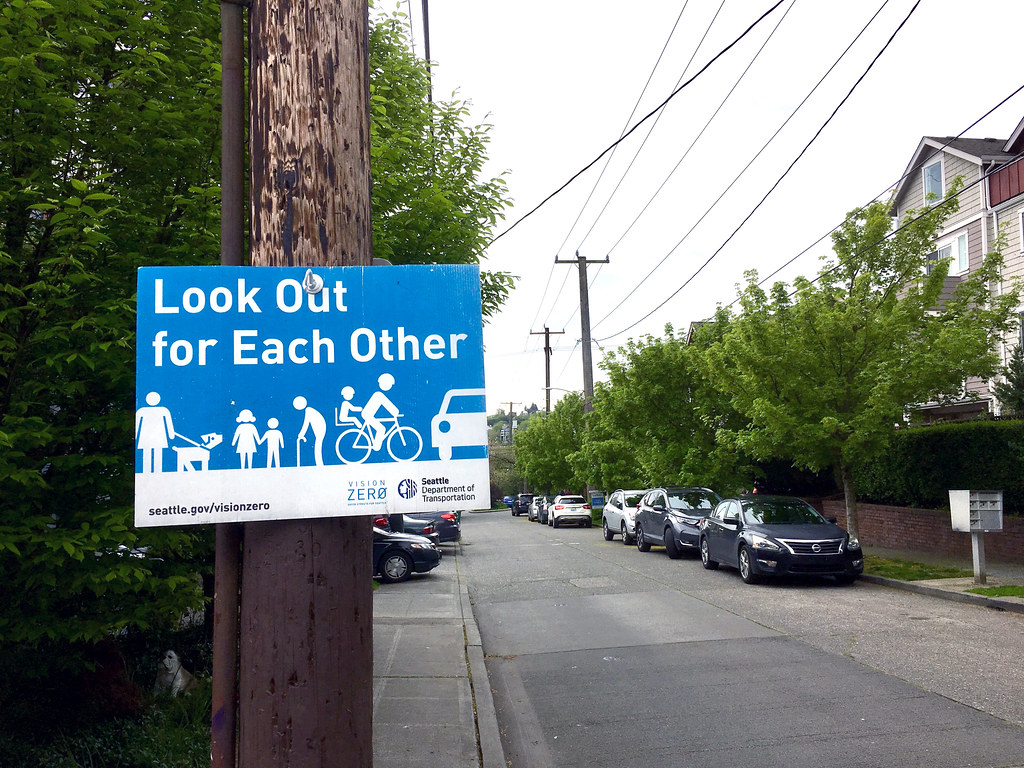

The infrastructure law created a new grant program to help communities tackle the increasing rate of roadway deaths. The Safe Streets and Roads for All program allows localities to take direct steps to improve safety for all roadway users, whether they’re setting up a Vision Zero plan or actually planning, designing, and constructing street safety improvements. Funding is available now.
Is there a particularly dangerous street near you? We and Smart Growth America want to see it. Share photos and videos of your streets on Twitter with #DangerousByDesign and/or tagging @SmartGrowthUSA. Learn more on Smart Growth America’s website.
In a recent House Transportation and Infrastructure Committee hearing, expert witnesses and representatives alike expressed their commitment to Vision Zero as well as their concern for underserved and marginalized communities. Representative Hank Johnson (D-GA) got the discussion started, and his words are worth repeating:
“While pedestrian safety impacts all Americans, the risks are not evenly distributed. According to a recent Governor’s Highway Safety Association study, Black children ages four to 15 had the highest rates of fatalities involving pedestrians as a percentage of all motor vehicle traffic fatalities.”
Up to this point, localities across the United States had to rely on their own resources or engage in long, frustrating negotiations with their state DOTs to tackle roadway safety issues with existing federal formula funds. Now, localities that want to implement Vision Zero plans have a more direct route to funding and guidance through the new Safe Streets for All (SS4A) program. Created by the infrastructure law, the SS4A program sets aside $6 billion over five years to fund studies, planning, and project construction to increase the safety of all road users and shift the paradigm in road construction to safety over speed.
The Safe Streets for All program is open for business
The USDOT has released a Notice of Funding Opportunity for local authorities, state and local governments, tribal groups, and metropolitan planning organizations (MPOs). Any of these entities can now apply alone or through a joint application with other entities (encouraged). Because of the historical complexities in applying for federal grants, the USDOT’s R.O.U.T.E.S. tools have been made available to support communities needing technical help with applying and processing grants, especially rural and underserved communities.
The Federal Highway Administration (FHWA) requires a Comprehensive Action Plan (otherwise known as a Vision Zero plan) prior to funding the planning and construction of safety projects with SS4A program dollars. SS4A funding opportunities are available for applicants in varying stages of Vision Zero planning. Applicants who are starting from scratch or who require a considerable amount of work to complete an Action Plan should apply for an Action Plan Grant (or a Supplementary Action Plan Grant for plan update work). An Action Plan Grant consists of a safety analysis, equity considerations, planning structure, and other aspects that culminate in a plan to achieve the goal of Vision Zero. Likewise, applicants who are ready to build projects in their Vision Zero plan should apply for an Implementation Grant.
| Type of grant | Max funding |
|---|---|
| Implementation Grant | $30 million |
| Action Plan Grant (localities or tribal governments) | $1 million |
| Action Plan Grant (MPOs) | $5 million |
Drawing from the program’s $6 billion, the FHWA expects to fund hundreds of Action Plan Grants and about 100 Implementation Grants. As shown in the table above, different allotments of funding are provided for different stages of implementation (with the maximum amount of $30 million provided for Implementation Grants). If an applicant is selected for a grant through SS4A, the entity must commit to Justice40 goals including the allocation of 40 percent of funding to low-income or underserved communities.
After the application process, the FHWA will assess applications using criteria considering safety, equity, effective practices and strategies, project readiness and more.
Maximizing the potential of programs like SS4A is essential
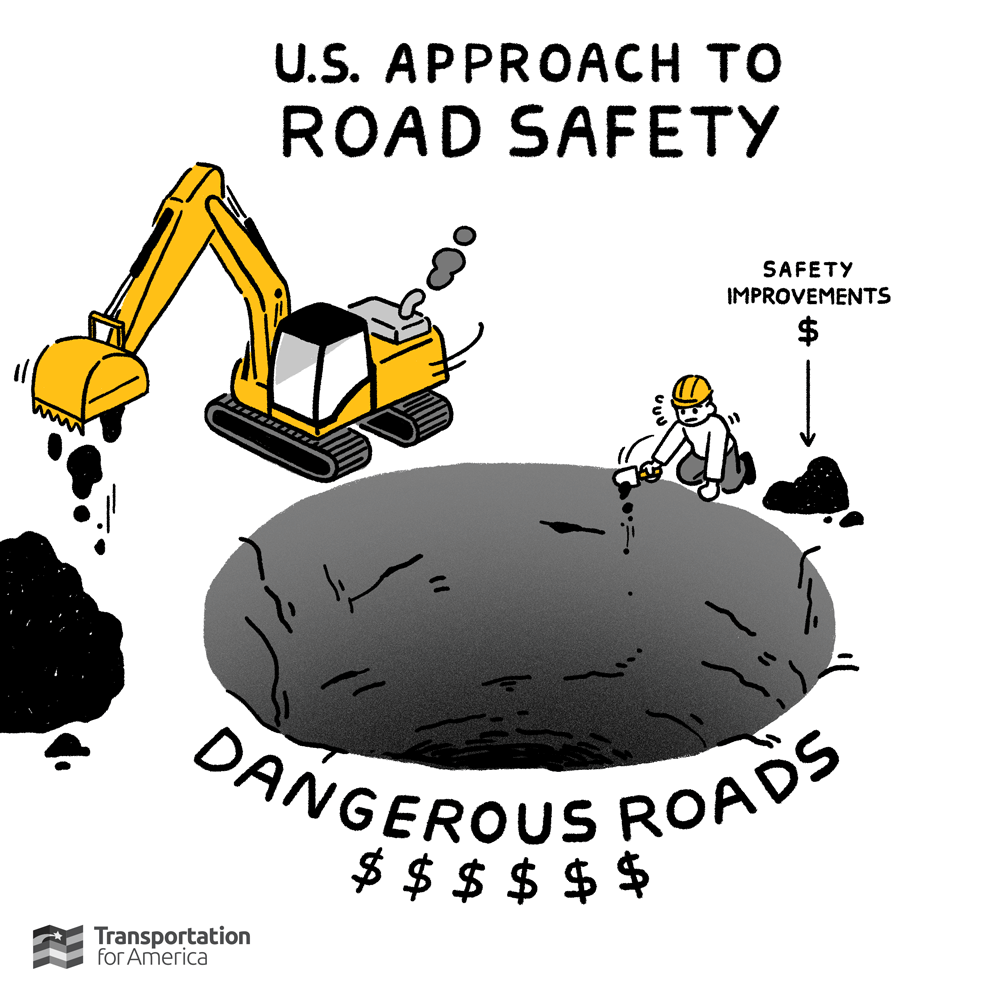
While disappointing but not surprising, the majority of funding from the infrastructure law sticks to the status quo of giving states wide flexibility with their federal dollars, which many states use to widen roads, build new ones, and/or prioritize speed above safety, often perpetuating the same problems that programs like SS4A are created to solve. (Dangerous By Design 2022, an upcoming report created by the National Complete Streets Coalition and Smart Growth America, will get into some of these concerns.) For this reason, it’s vital that every dollar of the new SS4A program is maximized, helping as many communities as possible capitalize on this opportunity to create safer, more equitable roads that serve vulnerable road users. USDOT should act upon their commitment to equity within this program and prioritize projects that mitigate danger in marginalized communities, where the most vulnerable road users live and travel.
SS4A applications are due on September 15th. Transportation for America members get hands-on assistance in application to competitive grants such as the SS4A. Those interested in becoming members can inquire on our site.
Transportation for America members have access to exclusive resources that provide further detail on this topic. To view memos and other members-only resources, visit the Member Hub located at t4america.org/members. (Search “Member Hub” in your inbox for the password, or new members can reach out to chris.rall@t4america.org for login details.) Learn more about membership at t4america.org/membership.
Transportation for America members have access to exclusive resources that provide further detail on this topic. To view memos and other members-only resources, visit the Member Hub located at t4america.org/members. (Search “Member Hub” in your inbox for the password, or new members can reach out to chris.rall@t4america.org for login details.) Learn more about membership at t4america.org/membership.




